
How To Fix Purple And Red Cannabis Stems
Spotted some purple or red stems in your cannabis garden? In this article, we'll teach you how to identify whether they're a part of your plant's genetics or the symptom of an underlying problem. Even better, we'll tell you how to fix it!
Purple cannabis flowers are prized among growers for their extra bag appeal. However, purple or red-coloured stems tend to draw a bit more concern, as they can potentially hint at serious underlying issues such as the presence of pathogens, nutrient lockout, or pH problems. Keep reading to learn more about purple/red cannabis stems, when they're worth worrying about, and how to fix them if there is genuine cause for concern.
What causes red and purple cannabis stems?
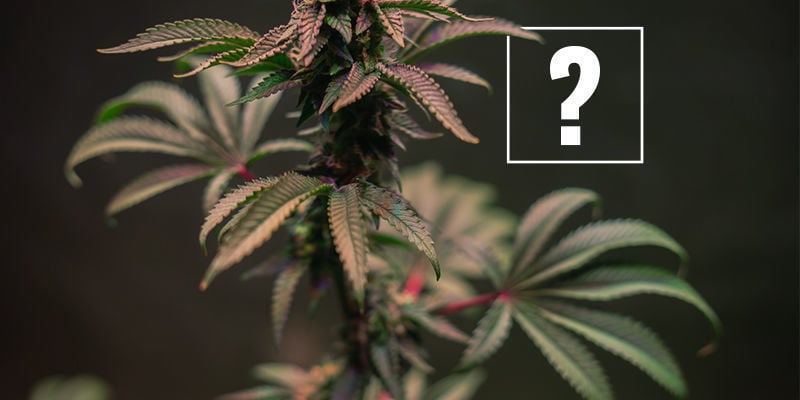
Cannabis is a fascinating plant with the ability to exhibit many different colours. While we often think of cannabis as a lush green plant, it is fairly common for some varieties to develop purple, pink, and red hues, especially during the final weeks of flowering. Hence, if you see one of your green ladies develop stems with red or purple hues, stay calm and inspect them a little closer. In most cases, if a plant appears otherwise healthy (that is, it’s growing well and has plenty of healthy foliage), red or purple discolouration of the stems may be nothing to worry about, and is likely caused by the plant's genetics.
If, however, a plant develops red or purple stems and also shows signs of stress, such as discoloured, drooping, or clawing leaves, foliar damage, or stunted growth, you should investigate further to see if there's a more serious problem lurking. In what follows, we break down the main culprits behind red and purple stems, and examine whether they pose any threat to your plants; if so, we'll also provide some tips on how to remedy the situation.
Improper pH level
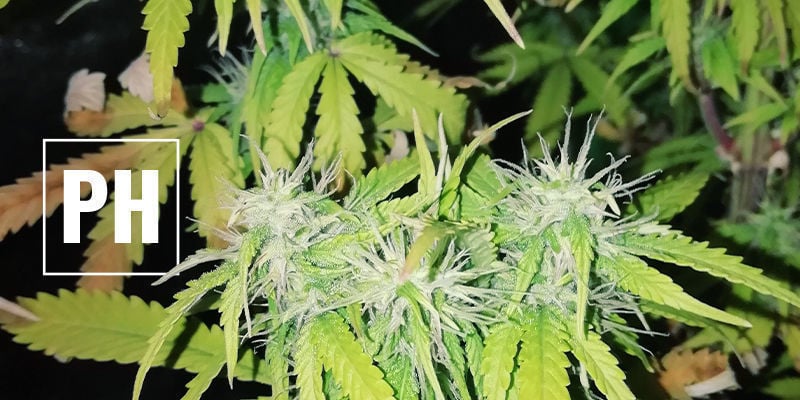
pH is super important for growing healthy cannabis plants, and fluctuations in the pH of your growing medium or nutrient solution can affect your plants' ability to absorb nutrients. If exposed to subpar pH conditions (anywhere above 7 or below 5), plants will eventually suffer from nutrient deficiencies, which can cause discolouration.
If your plants have discoloured stems and discoloured leaves (especially yellow or red leaves), take the following steps to test the pH of your entire operation:
- Use a digital pH meter or simple pH testing kit to measure the pH of your water, growing medium, and nutrient solution.
If the pH of your water is within the correct range, water your plants until there’s runoff, and measure the pH of this collected sample. If the runoff falls outside of the ideal pH range for weed, you'll need to up or down-regulate the pH of your growing medium accordingly.
If both your water and runoff are within the right pH range, test the pH of your nutrient solution; some fertilisers might drive the pH of the water up or down, making it fall outside the ideal range of about 6–6.5.
Low temperatures
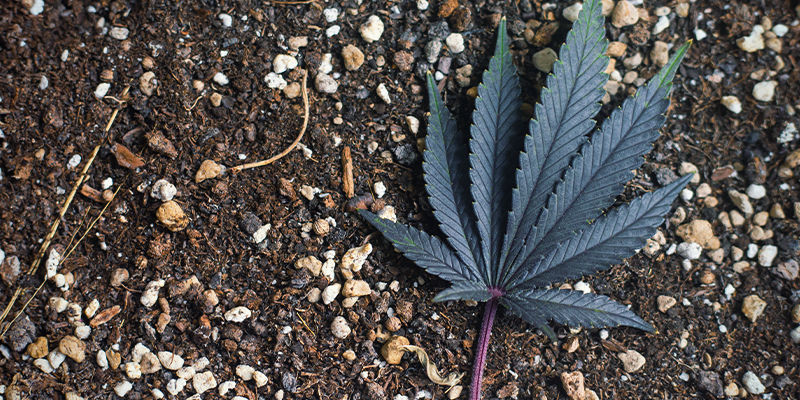
Another common factor influencing the colour of cannabis plants is, of course, temperature. If you've ever grown weed outdoors and had a late harvest, you've probably seen how the cold (especially at night) brings out dark purple hues in some specimens. And while these colours can be extremely pleasing to the eye, overexposure to low temperatures can cause your plants some serious stress.
Although a hardy plant, most varieties of cannabis don't like temperatures below 12°C. Prolonged exposure to low temperatures will typically cause discolouration of the stems and leaves, as well as stunted growth. In strains with a tendency to display hermaphroditism, cold temperatures can cause enough stress to trigger the development of pollen sacs, or "bananas", on female plants.
Indoors, there are a number of ways you can address low temperatures, including:
- Reduce the amount of fresh air intake in your grow space
- Lower the settings on your wall/floor fans
- Switch to HID lighting (which emits a lot more heat)
- Instal heat mats under your pots to keep your plants' roots warm
- Use mulch to insulate the roots
Outdoors, however, addressing low temperatures can be a little more tricky. Here are a few things you can try:
- Bring your plants indoors if they’re in containers (especially during the night)
- Use mulch to insulate the root system
- Use heat mats
- Build a basic greenhouse (permanent solution)
Nutrient lockout
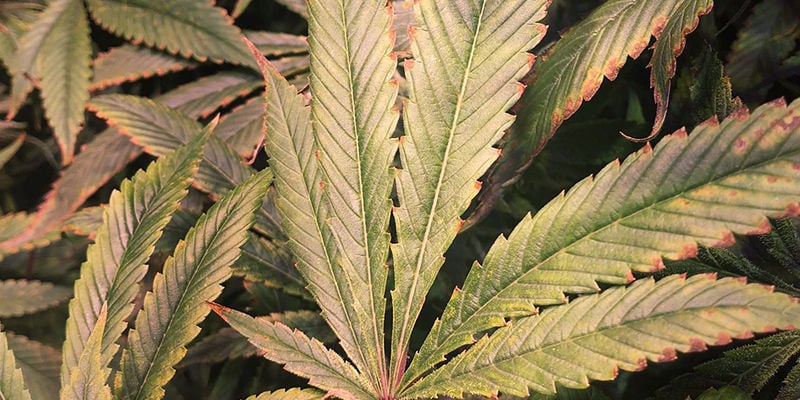
Nutrient lockout has a number of causes and—like a pH issue—essentially prevents your plants from taking up nutrients. If your green ladies are suffering from nutrient lockout, they'll typically show signs of a nutrient deficiency, which can include discoloured stems, discoloured foliage (yellow or red leaves or burnt leaf tips), and slow growth.
Nutrient lockout is typically caused by either a pH issue or prolonged use of strong chemical fertilisers, which can cause salts and nutrients to build up in the soil and keep your plants from feeding properly. The best way to detect if there’s an issue is to test the EC (electrical conductivity) of your nutrient solution and runoff. If the EC of the runoff is the same or very similar to that of your nutrient solution, you'll know that your plants aren't feeding.
Once you've identified nutrient lockout, you'll want to know what's causing it. Here’s how you should go about addressing the issue.
-
Check the pH of your soil, nutrient solution, and runoff. If either of the three fall below or above the ideal range for cannabis (6–6.5), this is likely what's keeping your plants from feeding. To address the problem, flush the affected plant's roots with pH-regulated water and do not water or feed the plant until its soil has dried completely. In the future, always use a pH meter and pH up/down products to regulate the pH of your water and nutrient solution.
- If pH isn't the cause of your nutrient lockout, the next likely culprit is salt buildup. In this case, flush your plant's roots with a specialised flushing supplement to remove any excess nutrients from the soil (do this according to the instructions that come with the product you're using; there are many on the market). Once you're ready to feed your plants again, consider switching to an organic or milder fertiliser.
Light intensity
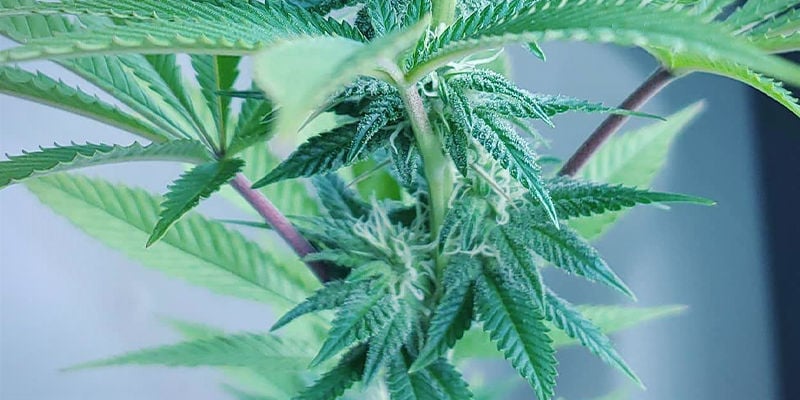
Light has a huge impact on the pigments in cannabis. Changes in light intensity, especially during flowering, can sometimes cause notable changes in the colour of the leaves and buds of your plants, and also the stems. If, for example, you've recently defoliated your plants, light might be reaching areas it previously couldn't get to, which may cause discolouration. This is completely harmless and normal, especially when not accompanied by any other symptoms.
If you're growing indoors and think lighting might be what's causing the stem discolouration, make sure your lights are hanging 60–90cm above your canopy; adjust if they're higher or lower. Also, ensure you're using grow lights with a light spectrum suitable for growing cannabis; cannabis likes blue light when vegging (400–500nm) and red light during bloom (620–750nm).
Genetics
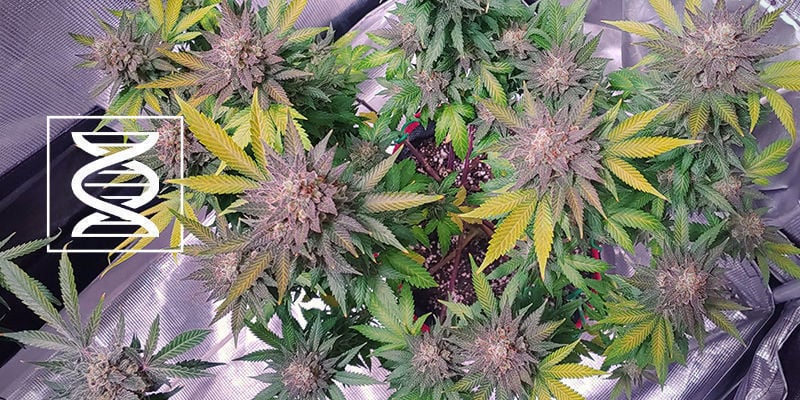
One of the biggest causes of red or purple stems is simply genetics. Some strains, particularly indicas and indica-dominant hybrids, have a high tendency to develop purple or red hues, especially in late flowering and when exposed to cool temperatures. But there are myriad other strains out there capable of developing all kinds of unique colours, from dark shades of purple to fiery red and even pink.
If your plants are developing red and purple stems but show no other signs of poor health or stress (more info below), there's a good chance that their discolouration is caused by genetics, and that there's nothing to worry about.
Pathogens
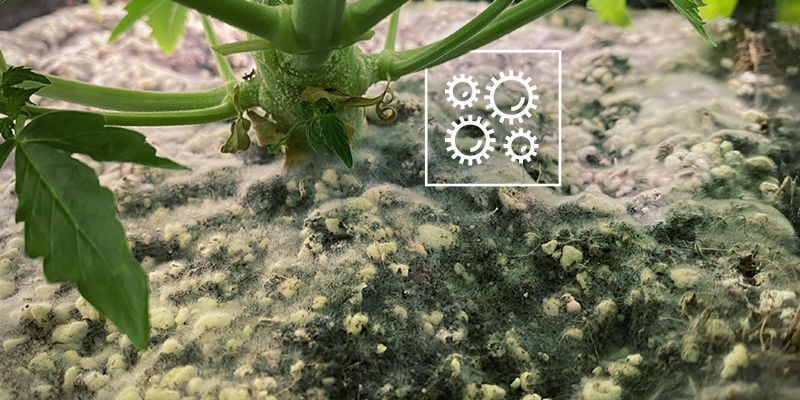
One cause of discoloured stems in cannabis that you'll want to avoid like the plague is pathogens. Fungi can attack cannabis in a variety of ways, including via the roots, by working their way up the length of the plant and gradually killing off foliage, and by rotting flowers from the inside out. Unfortunately, most of the pathogens that affect cannabis are notoriously hard to detect and to repel. In fact, by the time you've spotted signs of a pathogen in your plants, it's often too late to do much about it.
If you suspect that your plants are developing purple/red stems in response to such a threat, you need to identify the exact pathogen causing the discolouration, and learn how to treat it. Some of the pathogens most likely to cause purple/red stems include Fusarium and Pythium.
Plant stress
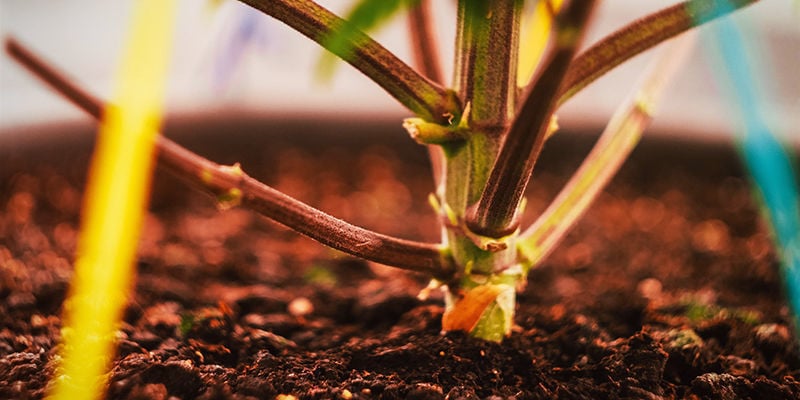
Minor changes in temperature, humidity, lighting, feeding, and watering can all stress cannabis plants, as can certain training techniques, pests, pathogens, and high winds—and many of these stressors can potentially cause red or purple stems. Unfortunately, pinpointing what exactly is stressing a plant can be difficult, as each specimen responds to stress differently, and some strains are simply more resilient to certain kinds of stress than others.
If your plants have red/purple stems and are showing other signs of poor health, go through the following checklist to use trial and error to identify the potential problem:
- Is my grow space too hot, cold, dry, or humid?
- How often am I watering my plants? Could there be an issue with over or under-watering?
- Am I regularly measuring pH?
- How often am I feeding my plants, and what fertiliser am I using? Could nutrient deficiency/lockout/burn be a problem?
- What training techniques have I been implementing? Could I have caused my plants too much stress from training?
Red or purple cannabis stems — knowing when there's cause for concern
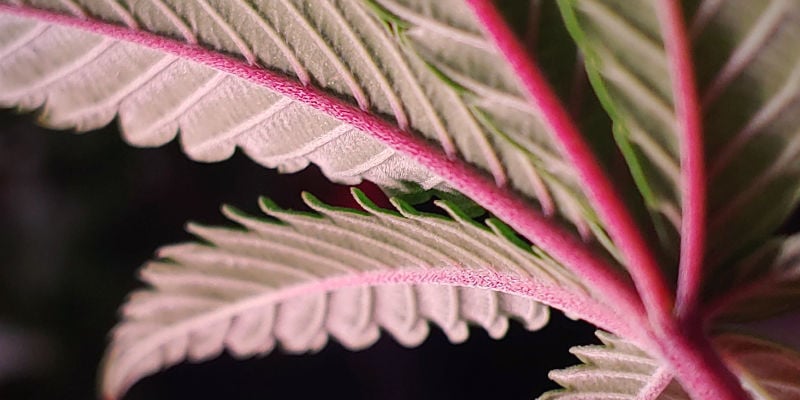
Red or purple stems on a cannabis plant can be alarming, especially when you've never seen them before. However, as we've shown in this article, they're not always cause for concern. If your plants seem otherwise happy and healthy and are showing solid signs of growth, there's a good chance that the discolouration you're witnessing is caused by genetics. If that's the case, sit back, relax, and enjoy as Mother Nature lets her true colours shine.
-
 9 min
June 16, 2022
How To Treat And Avoid Yellow Cannabis Leaves
There's no doubt that the appearance of yellowing leaves on your prized cannabis plant can be alarming. But did you know that it's usually down to a few common problems that are extremely easy to...
9 min
June 16, 2022
How To Treat And Avoid Yellow Cannabis Leaves
There's no doubt that the appearance of yellowing leaves on your prized cannabis plant can be alarming. But did you know that it's usually down to a few common problems that are extremely easy to...
-
 7 min
June 4, 2021
5 Problems That Can Occur During Cannabis Flowering
Getting the very best out of your bud requires care and attention. But then, why else would you be growing? From ensuring adequate nutrient levels and lighting conditions to the best ways to cover...
7 min
June 4, 2021
5 Problems That Can Occur During Cannabis Flowering
Getting the very best out of your bud requires care and attention. But then, why else would you be growing? From ensuring adequate nutrient levels and lighting conditions to the best ways to cover...
-
 6 min
September 3, 2019
What You Should Know Before Growing Cannabis
Growing marijuana is not as hard as it seems. However, there are certain things that all growers should know. Being mindful of these 5 things can help you to navigate the growing process with more...
6 min
September 3, 2019
What You Should Know Before Growing Cannabis
Growing marijuana is not as hard as it seems. However, there are certain things that all growers should know. Being mindful of these 5 things can help you to navigate the growing process with more...
-
 3 min
June 24, 2016
7 Common Causes Of Stress For Your Cannabis Plant
Occasional stress on your plants is no reason to panic. However, some types of stress can severely affect your plants’ health. Here are the 7 most common causes.
3 min
June 24, 2016
7 Common Causes Of Stress For Your Cannabis Plant
Occasional stress on your plants is no reason to panic. However, some types of stress can severely affect your plants’ health. Here are the 7 most common causes.











 United States
United States








